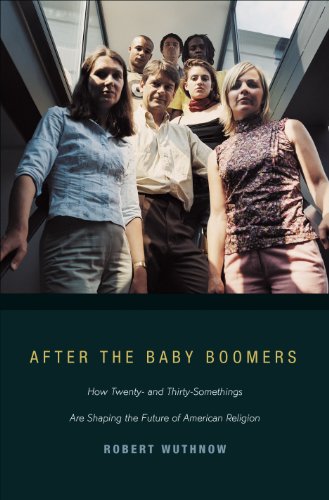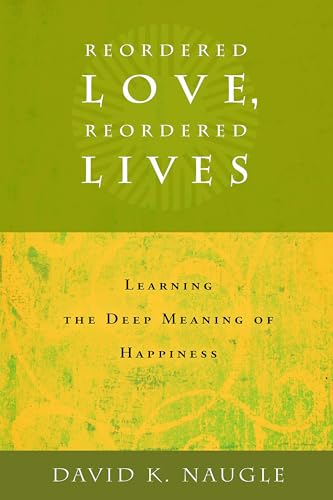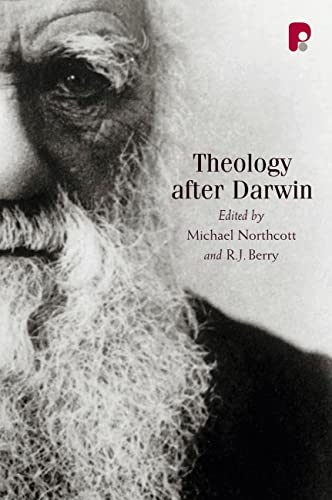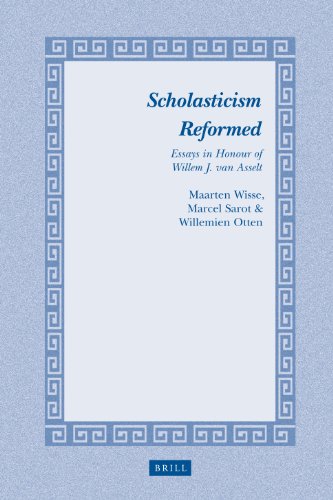After the Baby Boomers: How Twenty- and Thirty-Somethings Are Shaping the Future of American Religion
Written by Robert Wuthnow Reviewed By Henry H. KimMany years ago I came across a quote that posited that an interdependent relationship existed between sociology and theology: “Sociology without theology is powerless and the latter without the former is blind.” I confess that I cannot remember where I read this, nor if I am quoting or paraphrasing. Yet I have found myself continuously juxtaposing these two speciously disparate disciplines. As a Christian sociologist, I sensed a sociological and theological juxtaposition with respect to Robert Wuthnow’s After the Baby Boomers. As Wuthnow’s text entails a sociological endeavor, not a theological one, I will accordingly engage with his book primarily as a (Christian) sociologist; too often theologians (erroneously) massacre sociology, and sociologists do the same regarding theological counterparts.
Wuthnow is an established (understatement) sociologist at Princeton who specializes in the subfield of religion. In After the Baby Boomers, he states, “If I were a religious leader, I would be troubled by the facts and figures currently describing the lives of young Americans, their involvement in congregations, and their spiritual practices” (p. 214). He is troubled because “the future of American religion” resides in young adults who are forty-five and younger (p. 1) and that the proportions of this particular group’s religious participation is shrinking. He further claims that “unless religious leaders take younger adults more seriously, the future of American religion is in doubt” (p. 17). Wuthnow clearly argues from a sociological (as opposed to a theological) view by focusing on how structural components impact young-adult religiosity. In fact, he argues that various institutions bombard Americans until they turn twenty-one whereby these young adults are essentially abandoned (p. 12). The unintended consequence is that young adults are therefore “forced to be individualistic” as “they have no other resources but themselves” (p. 13). The claim that a lack of structural opportunities will impact group behavior is of course nothing new in sociology (cf. Oscar Lewis’ “culture of poverty”; Elaine Bell Kaplan’s “motherhood strategy”; Carol B. Stack’s “swapping”; etc.). Rather than continuing to be involved in religious institutions (which according to Wuthnow is partially the institutions’ fault), young adults have become “bricoleurs” or “tinkerers.” Wuthnow claims, “The single word that best describes young adults’ approach to religion and spirituality … is tinkering. A tinkerer puts together a life from whatever skills, ideas, and resources that are readily at hand” (p. 13). Sociologists would make a connection between “bricoleurs” and Ann Swidler’s “tool kit” analogy. However, tinkering becomes a highly individualized endeavor: “Each person is a tinkerer. Each individual claims the authority … to make up his or her mind about what to believe” (p. 15).
Wuthnow bases his claims on an extensive set of statistical data (cf. pp. 233–54). In fact, the depth and breadth of his data is a pleasant surprise after having also recently read his book America and the Challenges of Religious Diversity. In that book (unlike After the Baby Boomers), he explicitly lays out his presuppositions: “I write as a humanistically oriented social scientist. I view the encounter between Christianity and other religions as an instance of how we are shaped by our culture and of how we engage in cultural work. I am interested in the fact that religious diversity is embedded in cultural memory” (p. xvi). The shift from that book (a Weberian and ethnographic approach that emphasizes interpretation) to After the Baby Boomers is stark; the latter book is much more data-driven in a Durkheimian sense of “social facts” and is not what I would call an “ethnographic” approach per se. Interestingly, Wuthnow claims, “Ethnographic studies provide rich descriptive detail, but they are not well-suited for drawing broader generalizations.… More systematic evidence is needed before making such generalizations” (p. 190). A strength of After the Baby Boomers is the generalizability of the abstraction of “young adults” because it is so rich in quantitative data (sets).
However, employing a nominal category (“young adults”) is always challenging regarding the applicability of generalizations versus particulars. “Young adults” may be a useful category regarding age, but becomes problematic when incorporating religion and “immigration and ethnic diversity” (in ch. 9). Books have been written on this intersection. Nonetheless, Wuthnow should be commended on his attempt to employ such large data sets. A complementary (perhaps supplementary) study that focuses on “emerging adults” (18- to 23-year-olds) and their religious patterns is Christian Smith’s Souls in Transition. However, Wuthnow’s data sets are much more extensive. Although both employ statistical measures of association (Wuthnow employs log regressions and Smith employs Pearson’s r) and Smith’s approach is longitudinal (three waves), Wuthnow’s approach is more rigorous.
Wuthnow appears to push against a rational choice of economics approach: “Some scholars believe these choices about religion and spirituality can be understood as rational choices and thus reduced to the same logic as economic decisions” (p. 113). In fact, Wuthnow employs a sub-heading, “Thinking Beyond Winners and Losers” (p. 71), that happens to correspond with a sub-title of a book that many consider to be a definitive work in the sociology of religion via a supply-side of rational choice (economics) by Roger Finke and Rodney Stark, The Church of America, 1776–2005: Winners and Losers in Our Religious Economy. Could Wuthnow have incorporated supply- and consumer-side rational choice of religion models, delimited rational choice, and structural factors regarding the contexts of departure and reception for non-white young-adult immigrants? Yes. Does this denigrate Wuthnow’s contribution? Absolutely not. Methodologically, Wuthnow levels a challenge to all who would venture in the sociology of religion particularly because of his attempt to employ so much evidence via data (sets).
However, let me make a few comments as a Christian sociologist. These comments are not to be leveled against Wuthnow in particular but also against the discipline of sociology of religion in general. First, social constructs and forces often assume a self-contained world, and this counters my understanding of a transcendent and eternal God (not a totem) who decides to interact with his creation (redemptive history). Second, the fate of the church does not reside in “young adults” or any other persons. As mentioned in the quote regarding the interdependency between sociology and theology, I believe that sociology is valid as a means of description and inference. It is a valid means regarding societal diagnosis via a “sociological imagination.”
However, it is severely limited regarding prescription. If the church employed sociology as a prescriptive means, then Christians would have to find a way for “women keeping house” (p. 59) and for pronuptialism and pronatalism, if in fact “being married or unmarried has a stronger effect on church attendance than anything else” (p. 62). I am reminded of Paul and his admonition regarding marriage and singlehood (1 Cor 7). In God’s providence (without obviating human responsibility), he proclaims his victory through the church “already-not-yet.” Finally, I find that Christian concepts such as “spiritual” and “church” (like the “meaning” of a “rainbow”) have been co-opted (and or commodified) via social constructs. In my understanding, Paul coined the adjective “spiritual” and used this word twenty-four out of the twenty-six uses in the NT. The word is particular to the Person and works of Jesus Christ. A new realm (sociological parallel of sacred and profane) was created via Christ, as the Anointed in redemptive history (cf. John 4:21–24). Persons (and things) can be deemed “spiritual” when associated with Jesus Christ. Unfortunately, this word is used willy-nilly and used contra matter (or establishment). Further, in this vein, church is not merely organization but it is also organism. The viability of the church is not dependent upon social forces but upon the nexus with Christ (John 15:5). Thus, we are defined and empowered via the triune God, and yet our content (theological aspects) is to be actualized pending our settings (sociological aspects) via various forms. On this note, Wuthnow’s work can be helpful to enable the church(es) to “become all things to all men” (1 Cor 9:22) as “bricoleurs” in the parameters of “his-story.”
Henry H. Kim
Wheaton College
Wheaton, Illinois, USA
Other Articles in this Issue
Most of us, I suspect, develop fairly standard ways, one might even say repetitive ways, to appeal to the motivations of our hearers when we preach the gospel...
How to Write—and How Not to Write—A Review: An Appreciative Response to Reviews of Ancient Near Eastern Themes in Biblical Theology by Dempster and Edgar
by Jeffrey J. NiehausI want to thank Themelios for the unusual opportunity to interact with two reviewers of my book Ancient Near Eastern Themes in Biblical Theology...
Parallels, Real or Imagined? A Review Article of Jeffrey J. Niehaus, Ancient Near Eastern Themes in Biblical Theology
by William EdgarWhen I came to Westminster Theological Seminary in Philadelphia as a young student in the 1960s, two things struck me...
Why Evangelicals Should Ignore Brian McLaren: How the New Testament Requires Evangelicals to Render a Judgment on the Moral Status of Homosexuality
by Denny BurkIn 2006 on Christianity Today’s leadership blog, Pastor Brian McLaren urged evangelical leaders to find a “Pastoral Response” to their parishioners on the issue of homosexuality...
A Member of the Family or a Stranger? A Review Article of Jeffrey J. Niehaus, Ancient Near Eastern
by Stephen DempsterWe cannot overstate how important knowing the context is for understanding the significance of any communication, whether that is a simple word, sentence, paragraph, larger text, sign, photograph, or cultural cue...






